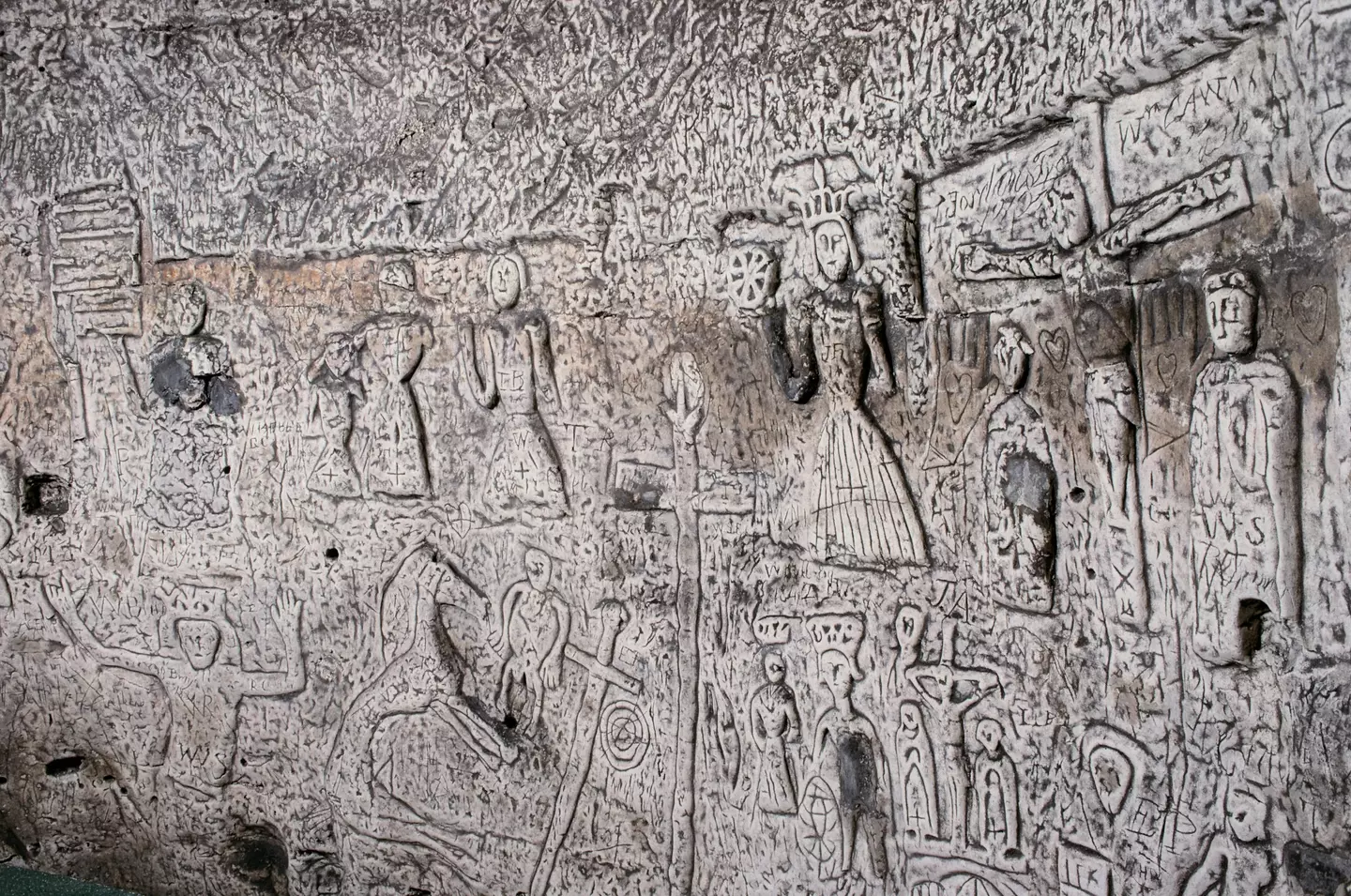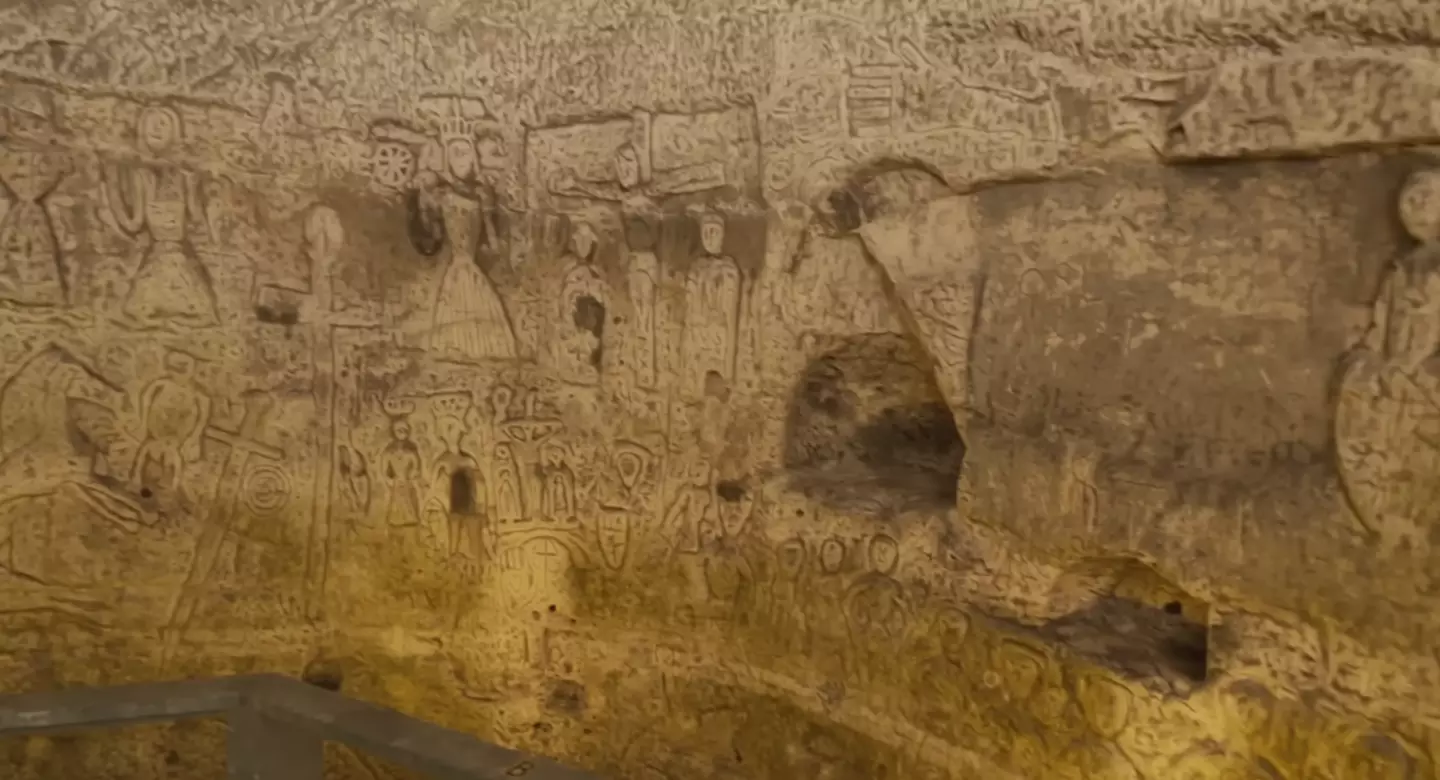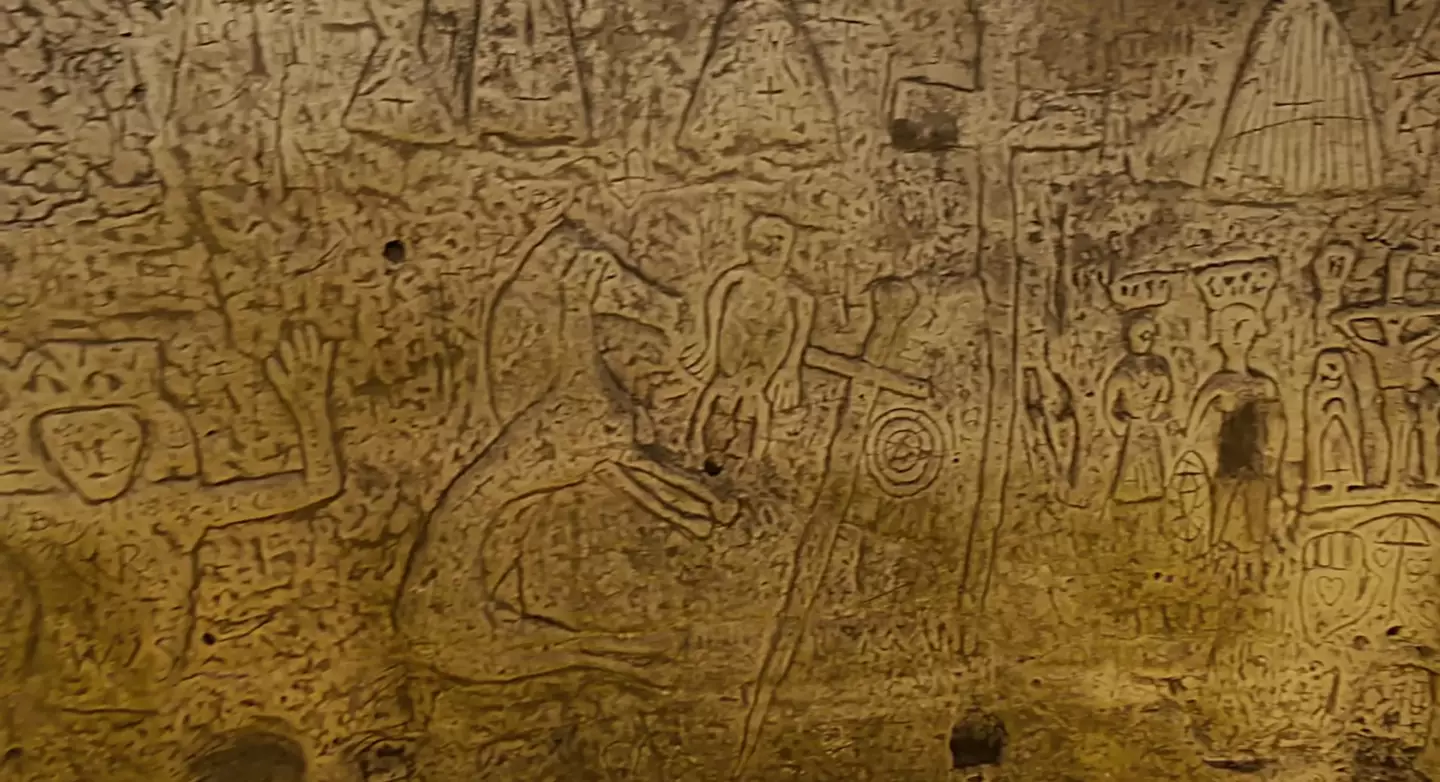Beneath a town in rural Hertfordshire lurks a mysterious place that nobody can explain after centuries.
It’s equal parts spooky, fascinating and baffling, and if you are still confused, don’t worry – you’re certainly not alone.
It’s called the Royston Cave, and it’s a circular chamber cut out of the chalky bedrock underneath the streets of Royston.
Advert
At five metres in diameter and eight metres tall, it has loads of incredible carvings in the walls, representing a number of faiths.
The really fascinating part about it is that despite it being discovered hundreds of years ago, nobody knows to this day what it was for.

If you’re a tourist in the area, it’s open for visitors on weekends and bank holidays during then summer months, so you can head on down and see what you think of it for yourself.
The carvings have a bit of everything, from Jesus Christ and his disciples to Richard the Lionheart and King David of the Old Testament.
Advert
It is thought that the cave was carved by men, and one popular theory suggests that it was a meeting place for the Knights Templar order or the Freemasons.
It was found by accident by a group of women in 1742, and there are no records about it.
So, people have speculated that it was a creation of the Knights Templar in the Middle Ages.

The Knights Templar were a military order of Christianity, existing until about 1312, before many were executed after being tortured into confessions of heresy.
Advert
Other theories about the cave claim it was a store house for Augustinian monks, or the private chapel of someone or other.
The truth – at the moment – is that we simply don’t know.
As well as a number of Christian carvings, there’s also some pagan-looking ones, including a horse, as well as a depiction of a ‘sheela na gig’, which is a figurative carving of a woman with a big vulva often found in Ireland, as well as in France and the UK.
There are also a number of the carvings that are just unidentifiable, as well as symbols that we know nothing about.

Advert
Honestly, if you’re into ancient mysteries about shadowy religious orders, this is as close to a Dan Brown book as you’re ever likely to get.
It is believed that the carvings on the wall were once coloured, with one early visitor to the cave remarking that he could still see some of the colours on St Catherine and the Holy Family.
So, if you want to see them for yourself, entry into the cave costs £8 for adults and just £2 for kids.